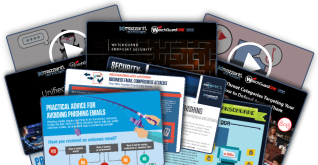Data analytics is changing the game for businesses of all types, including old-school industries that may not seem tech-savvy at first glance. From mom-and-pop car washes to local hardware stores, these traditional businesses are discovering the power of data to boost their bottom line.
By examining raw business data, owners can uncover valuable insights about their operations, customers, and market trends.
This process doesn’t require a PhD in computer science – simple tools and techniques can help even the most tech-averse business owner make smarter decisions.
Don’t worry if you’re still using a paper ledger – there’s no need to overhaul your entire system overnight. Starting small with basic data collection methods like customer surveys or sales tracking can yield big results. Who knows, you might even have fun playing detective with your business numbers! The key is to approach data analytics with an open mind and a willingness to learn.
Embracing Change
Old-school business owners face new challenges in today’s digital landscape. Adapting to technology and overcoming fears are key to staying competitive. Let’s explore how traditional companies can make the leap into data-driven decision-making.
The Digital Shift in Business
The business world is going digital fast. Paper files are out, and cloud storage is in. Companies now use data to make smart choices. This shift helps them work better and faster. Data analytics tools can spot trends humans might miss. They crunch numbers in seconds, saving time and money. For example, a store owner can see which products sell best at different times of year. This helps with stocking and pricing.
Many old-school businesses worry about the cost of new tech. But not changing can cost more in the long run. Competitors who use data often pull ahead. It’s like trying to run a race in dress shoes while others wear sneakers!
Overcoming Technophobia
Yes, the new tech has a very real phobia associated with it for many business owners: technophobia. It’s way more common than you could ever think. Well, the good news is that it can be beaten.
Start small. Try one tool at a time. Maybe it’s using some basic spreadsheet to track your sales. Do the more advanced analytics as you get comfortable.
Training is everything. Provide new skill classes for the staff. It would build up confidence and see the results of using data. It will also be an avenue for bonding among team members.
Seek non-technical-friendly software. Most of the tools available today have very simplistic interfaces. They are designed for non-tech heads. Remember that even the most high-tech CEO was once a novice.
Any business, no matter how old school, will get data savvy with patience and practice. It may be a bumpy ride, but it will be worth the end destination.
Data Analytics 101
Data analytics helps businesses make smart choices using numbers and info. It turns raw data into useful insights for better decisions. Let’s explore the basics of data analytics and why it matters.
Understanding Data Analytics
Data analytics is about finding patterns and meaning in data. It uses math, stats, and computer tools to sort through lots of info. The goal is to spot trends and get useful knowledge.
Companies collect data from many places. This can include sales records, customer info, and website traffic. Analytics turns this jumble of facts into clear takeaways.
There are different types of data analytics. Descriptive analytics looks at what happened in the past. Predictive analytics tries to guess what might happen next. Prescriptive analytics suggests actions to take.
Importance for Businesses
Data analytics is a game-changer for businesses big and small. It helps owners make choices based on facts, not just gut feelings.
With analytics, companies can:
- Find new ways to make money
- Cut costs and save time
- Understand customers better
- Spot problems before they get big
- Stay ahead of competitors
For example, a store might use data to figure out which products to stock. Or a factory could use it to make its machines run better.
Even small businesses can use simple analytics. Things like tracking sales or looking at social media likes can give useful info.
Key Analytics Concepts
Some main ideas in data analytics are:
- Data collection: Gathering info from different sources
- Data cleaning: Fixing mistakes and organizing the data
- Data visualization: Making charts and graphs to show findings
- Statistical analysis: Using math to find patterns
- Machine learning: Using computers to find complex trends
Tools for analytics range from simple to complex. Spreadsheets like Excel are good for beginners. Big companies might use fancy software like Tableau or Python.
It’s important to ask the right questions when doing analytics. Good questions lead to useful answers. Bad questions can waste time and give wrong ideas.
Privacy is a big deal in data analytics. Businesses must be careful with people’s info. They need to follow laws and keep data safe.

Implementing Data Analytics
Putting data analytics into practice can seem daunting, but it’s a game-changer for old-school business owners. The key is to start small, use the right tools, and foster a data-friendly culture.
Starting Small with Data
Begin with the basics. Pick one area of your business to focus on, like sales or customer service. Look at the numbers you already have. How many products did you sell last month? Which items are most popular?
Make a simple spreadsheet to track these figures. Update it weekly or monthly. This helps you spot trends over time.
Try setting a small goal based on your data. Maybe you want to boost sales of your least popular item by 10%. Keep an eye on the numbers as you work towards this target.
Remember, you don’t need to be a math whiz. Just start paying attention to the numbers that matter most to your business.
Tools and Resources
You don’t need fancy software to get started with data analytics. Here are some user-friendly options:
- Microsoft Excel: More powerful, great for larger datasets
Yes, that is the only one I feel like recommending. Everything else is much less in terms of functions and reliability.
For those ready to dive deeper:
- QuickBooks: Tracks financial data and creates reports
- Google Analytics: Free tool for website traffic insights
- Salesforce: Customer relationship management with built-in analytics
Pick a tool that fits your comfort level. Start simple and upgrade as you grow more confident with data.
Building a Data-Driven Culture
Getting your team on board is crucial. Here’s how to make data a part of your business DNA:
- Lead by example. Share data in team meetings.
- Make data easy to access. Use dashboards or regular reports.
- Celebrate data-driven wins. Did a new strategy boost sales? Throw a pizza party!
Train your staff to use data tools. Offer workshops or online courses. Encourage questions and curiosity about numbers.
Create a “data champion” role. This person can help others understand and use data.
Remember, it’s okay to make mistakes. The goal is to learn and improve, not to be perfect right away.
Leveraging Insights for Growth
Data insights can fuel business growth when used wisely. Smart leaders tap into analytics to guide choices and measure progress. Let’s explore how to put data to work.
Making Informed Decisions
Numbers tell a story about your business. Sales figures show what products are hot. Customer feedback points to areas for improvement. Traffic data reveals busy times.
Look at trends over time. Are certain items selling better in summer? Do more people visit on weekends? This info helps with stocking and staffing.
Don’t forget to compare. How do you stack up against competitors? Industry benchmarks give context to your stats.
Ask questions of your data. Why did sales spike last month? What changed? Digging deeper often uncovers useful insights.
Remember, gut feelings still matter. Data should guide decisions, not make them for you. Balance hard facts with experience.
Tracking Performance and Goals
Set clear, measurable goals. “Increase sales” is vague. “Boost monthly revenue by 10%” gives a target to aim for.
Use dashboards to keep an eye on key metrics. These give a quick snapshot of business health. Popular measures include:
- Sales figures
- Customer satisfaction scores
- Website traffic
- Inventory turnover
Check progress regularly. Weekly or monthly reviews help catch issues early. Celebrate wins and address setbacks promptly.
Break big goals into smaller steps. This makes progress easier to track. It also helps spot roadblocks sooner.
Be ready to adjust. If a goal seems out of reach, don’t give up. Tweak your approach based on what the data shows. Small changes can lead to big wins over time.
Conclusions
Data analytics has tremendous advantages for traditional business owners. It paves the way for wiser decisions based upon facts rather than gut feelings.
Those organizations that use data intelligently always perform better than those who do not. They detect problems well in advance and unlock new ways towards growth.
There is no reason getting started with data analytics need be burdensome. Small steps are huge wins. Even simple tools give interesting insights.
First, start small and focus on what matters most. Identify one or two places where you can improve first, and then as you get comfortable, do more.
Remember, “data isn’t a substitute for human judgment. It’s something used to make that judgment more sharp. The best results come from a mix of data smarts with years of business know-how.”.
But ultimately, data analytics is just having that really smart assistant to help you notice stuff you would otherwise have missed and concrete facts to give substance to ideas. And who can’t want a little of that kind of help?
Honest, though-even if you’re not at all techie-you can be a true data dynamo. It’s easier than learning how to work the office coffee machine!
For businesses looking to leverage the full potential of Microsoft Office, contact eMazzanti today to learn how we can support your digital transformation journey.






